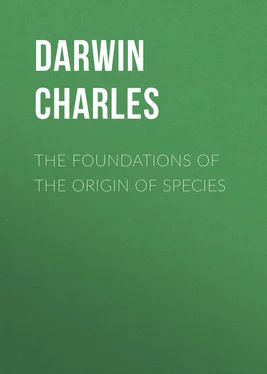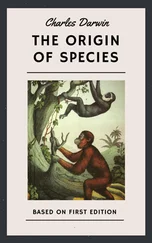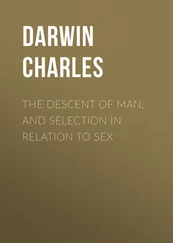Charles Darwin - The Foundations of the Origin of Species
Здесь есть возможность читать онлайн «Charles Darwin - The Foundations of the Origin of Species» — ознакомительный отрывок электронной книги совершенно бесплатно, а после прочтения отрывка купить полную версию. В некоторых случаях можно слушать аудио, скачать через торрент в формате fb2 и присутствует краткое содержание. Жанр: foreign_antique, foreign_prose, на английском языке. Описание произведения, (предисловие) а так же отзывы посетителей доступны на портале библиотеки ЛибКат.
- Название:The Foundations of the Origin of Species
- Автор:
- Жанр:
- Год:неизвестен
- ISBN:нет данных
- Рейтинг книги:3 / 5. Голосов: 1
-
Избранное:Добавить в избранное
- Отзывы:
-
Ваша оценка:
- 60
- 1
- 2
- 3
- 4
- 5
The Foundations of the Origin of Species: краткое содержание, описание и аннотация
Предлагаем к чтению аннотацию, описание, краткое содержание или предисловие (зависит от того, что написал сам автор книги «The Foundations of the Origin of Species»). Если вы не нашли необходимую информацию о книге — напишите в комментариях, мы постараемся отыскать её.
The Foundations of the Origin of Species — читать онлайн ознакомительный отрывок
Ниже представлен текст книги, разбитый по страницам. Система сохранения места последней прочитанной страницы, позволяет с удобством читать онлайн бесплатно книгу «The Foundations of the Origin of Species», без необходимости каждый раз заново искать на чём Вы остановились. Поставьте закладку, и сможете в любой момент перейти на страницу, на которой закончили чтение.
Интервал:
Закладка:
In the same letter to Zacharias he says, “When I was on board the Beagle I believed in the permanence of species, but as far as I can remember vague doubts occasionally flitted across my mind.” Unless Prof. Judd and I are altogether wrong in believing that late or early in the voyage (it matters little which) a definite approach was made to the evolutionary standpoint, we must suppose that in 40 years such advance had shrunk in his recollection to the dimensions of “vague doubts.” The letter to Zacharias shows I think some forgetting of the past where the author says, “But I did not become convinced that species were mutable until, I think, two or three years had elapsed.” It is impossible to reconcile this with the contents of the evolutionary Note Book of 1837. I have no doubt that in his retrospect he felt that he had not been “convinced that species were mutable” until he had gained a clear conception of the mechanism of natural selection, i. e. in 1838-9.
But even on this last date there is some room, not for doubt, but for surprise. The passage in the Autobiography 12 12 Life and Letters , i. p. 83.
is quite clear, namely that in October 1838 he read Malthus’s Essay on the principle of Population and “being well prepared to appreciate the struggle for existence … it at once struck me that under these circumstances favourable variations would tend to be preserved, and unfavourable ones to be destroyed. The result of this would be the formation of new species. Here then I had at last got a theory by which to work.”
It is surprising that Malthus should have been needed to give him the clue, when in the Note Book of 1837 there should occur – however obscurely expressed – the following forecast 13 13 Life and Letters , ii. p. 8.
of the importance of the survival of the fittest. “With respect to extinction, we can easily see that a variety of the ostrich (Petise 14 14 Avestruz Petise, i. e. Rhea Darwini .
), may not be well adapted, and thus perish out; or on the other hand, like Orpheus 15 15 A bird.
, being favourable, many might be produced. This requires the principle that the permanent variations produced by confined breeding and changing circumstances are continued and produce«d» according to the adaptation of such circumstances, and therefore that death of species is a consequence (contrary to what would appear in America) of non-adaptation of circumstances.”
I can hardly doubt, that with his knowledge of the interdependence of organisms and the tyranny of conditions, his experience would have crystallized out into “a theory by which to work” even without the aid of Malthus.
In my father's Autobiography 16 16 Life and Letters , i. p. 84.
he writes, “In June 1842 I first allowed myself the satisfaction of writing a very brief abstract of my theory in pencil in 35 pages; and this was enlarged during the summer of 1844 into one of 230 pages 17 17 It contains as a fact 231 pp. It is a strongly bound folio, interleaved with blank pages, as though for notes and additions. His own MS. from which it was copied contains 189 pp.
, which I had fairly copied out and still possess.” These two Essays, of 1842 and 1844, are now printed under the title The Foundations of the Origin of Species .
It will be noted that in the above passage he does not mention the MS. of 1842 as being in existence, and when I was at work on Life and Letters I had not seen it. It only came to light after my mother's death in 1896 when the house at Down was vacated. The MS. was hidden in a cupboard under the stairs which was not used for papers of any value, but rather as an overflow for matter which he did not wish to destroy.
The statement in the Autobiography that the MS. was written in 1842 agrees with an entry in my fathers Diary: —
“1842. May 18th went to Maer. June 15th to Shrewsbury, and on 18th to Capel Curig… During my stay at Maer and Shrewsbury (five years after commencement) wrote pencil sketch of my species theory.” Again in a letter to Lyell (June 18, 1858) he speaks of his “MS. sketch written out in 1842 18 18 Life and Letters , ii. p. 116.
.” In the Origin of Species , Ed. i. p. 1, he speaks of beginning his speculations in 1837 and of allowing himself to draw up some “short notes” after “five years' work,” i. e. in 1842. So far there seems no doubt as to 1842 being the date of the first sketch; but there is evidence in favour of an earlier date 19 19 Life and Letters , ii. p. 10.
. Thus across the Table of Contents of the bound copy of the 1844 MS. is written in my father's hand “This was sketched in 1839.” Again in a letter to Mr Wallace 20 20 Life and Letters , ii. p. 146.
(Jan. 25, 1859) he speaks of his own contributions to the Linnean paper 21 21 J. Linn. Soc. Zool. iii. p. 45.
of July 1, 1858, as “written in 1839, now just twenty years ago.” This statement as it stands is undoubtedly incorrect, since the extracts are from the MS. of 1844, about the date of which no doubt exists; but even if it could be supposed to refer to the 1842 Essay, it must, I think, be rejected. I can only account for his mistake by the supposition that my father had in mind the date (1839) at which the framework of his theory was laid down. It is worth noting that in his Autobiography (p. 88) he speaks of the time “about 1839, when the theory was clearly conceived.” However this may be there can be no doubt that 1842 is the correct date. Since the publication of Life and Letters I have gained fresh evidence on this head. A small packet containing 13 pp. of MS. came to light in 1896. On the outside is written “First Pencil Sketch of Species Theory. Written at Maer and Shrewsbury during May and June 1842.” It is not however written in pencil, and it consists of a single chapter on The Principles of Variation in Domestic Organisms . A single unnumbered page is written in pencil, and is headed “Maer, May 1842, useless”; it also bears the words “This page was thought of as introduction.” It consists of the briefest sketch of the geological evidence for evolution, together with words intended as headings for discussion, – such as “Affinity, – unity of type, – fœtal state, – abortive organs.”
The back of this “useless” page is of some interest, although it does not bear on the question of date, – the matter immediately before us.
It seems to be an outline of the Essay or sketch of 1842, consisting of the titles of the three chapters of which it was to have consisted.
“I. The Principles of Var. in domestic organisms.
“II. The possible and probable application of these same principles to wild animals and consequently the possible and probable production of wild races, analogous to the domestic ones of plants and animals.
“III. The reasons for and against believing that such races have really been produced, forming what are called species.”
It will be seen that Chapter III as originally designed corresponds to Part II (p. 22) of the Essay of 1842, which is (p. 7) defined by the author as discussing “whether the characters and relations of animated things are such as favour the idea of wild species being races descended from a common stock.” Again at p. 23 the author asks “What then is the evidence in favour of it (the theory of descent) and what the evidence against it.” The generalised section of his Essay having been originally Chapter III 22 22 It is evident that Parts and Chapters were to some extent interchangeable in the author’s mind, for p. 1 (of the MS. we have been discussing) is headed in ink Chapter I, and afterwards altered in pencil to Part I.
accounts for the curious error which occurs in pp. 18 and 22 where the second Part of the Essay is called Part III.
Интервал:
Закладка:
Похожие книги на «The Foundations of the Origin of Species»
Представляем Вашему вниманию похожие книги на «The Foundations of the Origin of Species» списком для выбора. Мы отобрали схожую по названию и смыслу литературу в надежде предоставить читателям больше вариантов отыскать новые, интересные, ещё непрочитанные произведения.
Обсуждение, отзывы о книге «The Foundations of the Origin of Species» и просто собственные мнения читателей. Оставьте ваши комментарии, напишите, что Вы думаете о произведении, его смысле или главных героях. Укажите что конкретно понравилось, а что нет, и почему Вы так считаете.












